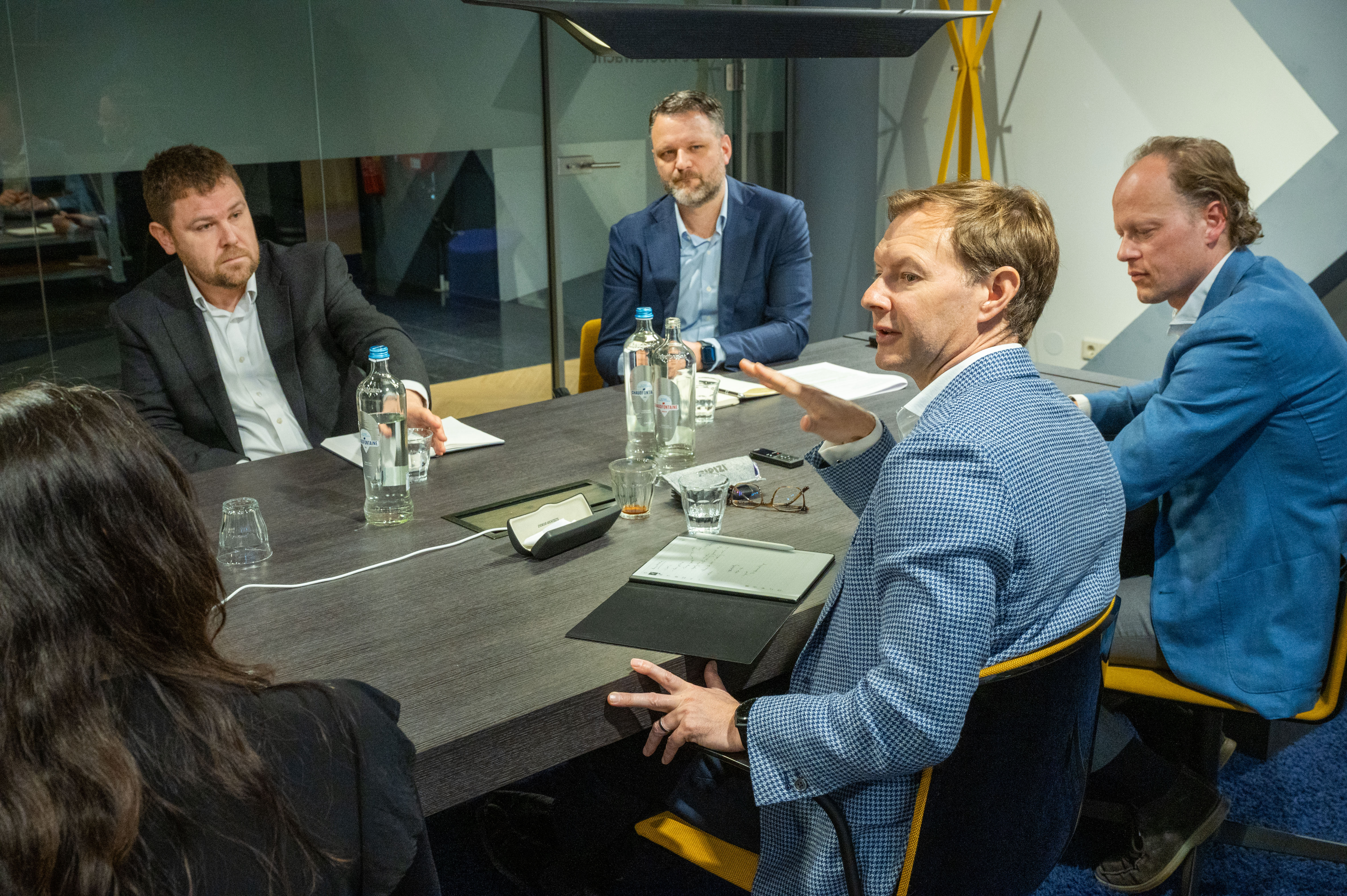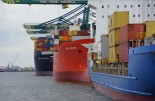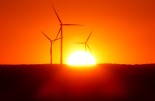Roundtable Green Infrastructure & Energy Transition
Roundtable Green Infrastructure & Energy Transition

This report was originally written in Dutch. This is an English translation.
Transport, energy, and water infrastructure face a major sustainability challenge. A ‘coalition of the willing’ has been formed, in which private parties are increasingly taking the lead. But who will foot the bill? How can investments in the energy transition be made wisely? And what role does nuclear energy play? Investors and experts will discuss these and other questions in a roundtable discussion led by Rishma Moennasing.
By Manno van den Berg
|
MODERATOR Rishma Moennasing, Rabobank Investment Office
PARTICIPANTS Angeles Toledo, Blue Sky Group Bart van Merriënboer, a.s.r. real assets investment partners Duncan Hale, Schroders Greenooat Friso Verveld, EY John Carey, L&G Lena Doan, Nuveen Mark Gilligan, AXA IM Alts Remko van der Erf, Intermediate Capital Group (ICG) |
We cannot ignore geopolitical developments, so let's start there. We have all seen the turmoil in the financial markets. What does Trump in the White House mean for green infrastructure?
Bart van Merriënboer: 'Donald Trump's presidential decisions on energy are less radical than people think. It's mainly about how the federal government deals with renewable energy. Import tariffs are another story. They could influence our customers' willingness to invest. Will they still want to invest in the US? Will those tariffs affect returns? That is still unclear.'
Duncan Hale: 'There is headwind in the US, especially around offshore wind and onshore wind projects on federal land. But in a broader sense, we see that construction is still continuing. Transactions are still taking place, certainly in operational assets.'
Remko van der Erf: 'Ultimately, market developments will determine the outcome, not Trump. The offshore wind market in the US has been hit by Trump's order to revoke permits, but this order only affects around 4% of onshore wind projects in the US. So it's not a huge impact. In Europe, on the other hand, we are seeing that the importance of renewable energy and energy security is only increasing as a result of US policy.'
Lena Doan: 'Our energy infrastructure credit strategy is primarily focused on North America and Europe. We take a long-term view and believe that, despite the political turmoil, there are still plenty of opportunities for attractive investments in renewable energy. There is growing demand for electricity due to electrification, AI, and data centers. If you are independent of federal land or federal tax breaks, such as solar energy projects for energy distribution in local communities, people can still benefit from cheaper, sustainable energy. Especially in times of inflation and rising interest rates, everyone wants to pay less for their electricity bill.'
We believe that despite the political turmoil, there are still plenty of opportunities for attractive investments in renewable energy.
Mark Gilligan: 'The cost of solar and wind energy is now lower than that of any fossil fuel, including gas. America has a huge advantage in wind and solar, but has been turning its back on it for four years now. Europe needs to become self-sufficient in energy and is working on this, with the help of cheap solar panels and batteries from China. The chaos in the White House is actually strengthening the European Union in this policy. That's a reason to focus on Europe.'
Is this the moment for Europe to invest even more in green infrastructure and the energy transition?
Friso Verveld: 'Europe can take the lead in the energy transition now that the US is taking a step back. There is a huge opportunity to bring supply chains to Europe and thus become less dependent on the rest of the world. But that could increase costs, which is at odds with the goal of becoming more sustainable. Cheap electricity is crucial if you want to make industries more sustainable, through electrification or the switch to hydrogen.'
There is a huge opportunity to bring supply chains to Europe and thus become less dependent on the rest of the world.
Angeles Toledo: 'This is definitely the moment for Europe! Despite the uncertainty in the US and the possibility of rising costs for green infrastructure, Europe offers attractive opportunities. Europe remains on course for net zero. You can even see Dutch pension funds increasing their allocation to the energy transition. Under the new pension contract, funds may also be able to invest more in illiquid markets.'
Verveld: 'A strong and sustainable ecosystem in Europe offers opportunities in terms of employment and for capital providers. There is demand for more sustainable products throughout the chain. This should ultimately lead to a higher level of prosperity.'
Hale: 'Europe is attractive. The returns and opportunities we see in Europe today are much better than three years ago. There are fewer buyers in the market, which creates unique opportunities for strategic investments.'
Europe is working on energy independence and rearmament. Do you see opportunities for investors there?
Toledo: 'Securing our own energy supply is absolutely essential—and that creates investment opportunities. And it will become even more attractive as Europe becomes more competitive and efficient. Hopefully, the Omnibus Regulation will simplify reporting. Postponing the CSRD will help companies set priorities, but the shift toward greater sustainability must remain on track.'
Hale: 'Energy security is crucial. Major investments in European defense make little sense if you are still dependent on gas from hostile countries or unreliable allies. This will lead to more investment in energy security, both in renewable energy and in battery technology.'
Gilligan: 'It's fascinating how quickly the term ‘unreliable allies’ is understood by everyone at the table. A lot has changed in a short time.'
Van Merriënboer: 'Aren't we in the Netherlands being a little hypocritical? We stopped using Russian gas, but now we import it from the US, where it is extracted through fracking – not exactly environmentally friendly. We could produce our own natural gas here in the Netherlands, with less environmental damage. But we don't want that in our backyard. Energy independence remains a difficult path, although there are still many untapped opportunities.'
What risks should investors consider when investing in green infrastructure?
Toledo: 'It is becoming increasingly important for pension funds to mitigate risks and avoid negative impacts. Not only because you want to do the right thing, but also because European regulations require double materiality: doing good and not causing harm. Think of the negative impact on biodiversity, flora, and fauna, but also social effects, such as working conditions, the country where projects are built, and the involvement of residents living near wind or solar parks. Circularity is also important, with the proper recycling of wind turbines and panels.'
Van Merriënboer: 'Risks must be assessed and mitigated, including in the supply chain. There are still places in the world where forced labor is used to extract raw materials that end up in solar panels. So you have to go all the way back to the mining company at the beginning of the chain.'
Gilligan: 'We think very carefully about what needs to happen to each of our assets over the next 25 years in order to truly achieve zero emissions. That also means we have to take risks, for example in the area of CO2 capture and storage. Not as a solution for the fossil fuel industry, but as a necessity for a circular economy, such as in waste-to-energy installations, which are difficult to make sustainable.'
Some asset managers employ animal rights specialists. Fascinating. How do you view biodiversity risks?
Hale: 'If you own a lot of wind and solar farms, you have a lot of land at your disposal. That makes biodiversity even more important. In the UK, there is now an incentive policy. A system may soon be introduced in which you can generate income through biodiversity net gain, such as restoring wild nature or attracting bees. You have to factor biodiversity risks into your models before you buy an asset. If you don't, you'll be forced to do so in five or ten years' time.'
John Carey: 'We value infrastructure because of its crucial role in everyday life, but that also means we need to be good stewards. This is now a hot topic in the media, among politicians, and regulators: are infrastructure owners really delivering on the long-term strategy they have committed to?'
Van der Erf: 'The great thing about biodiversity is that you can improve it. In one of the British solar parks managed by a company in our portfolio, the flora and fauna have been restored and animals have returned to the area. That is a clear positive effect. I can hardly imagine that there are still investors who do not include biodiversity as part of their business plan.'
Toledo: 'Europe is really leading the way, both in terms of biodiversity and the do-no-harm principles. But there is still a lot of work to be done; there are still many asset managers who are not doing this.'
Hale: 'One sustainability risk we haven't discussed yet is worker safety. We manage power plants, which are inherently risky environments. It is a moral obligation to be able to let your people work safely. But there is also a financial side: an accident is the quickest way to shut down a power plant. This risk is at the top of our agenda in all board meetings.'
There are also risks involved in building infrastructure, such as price increases for materials. How do you deal with that?
Doan: 'We have seen companies buying materials in advance and storing them in the US in anticipation of import duties. But just as with inflation during Covid and the pressure on global supply chains at the time, companies will probably have to renegotiate many off-take contracts due to higher costs. You are now also seeing more contracts with protection clauses against expected import tariffs.'
Van Merriënboer: 'One of the biggest risks for projects is connecting to the grid. Is it even possible to get the electricity from the grid to the consumers? During the day, there is a peak in renewable energy production. This is not only the case in the Netherlands, but worldwide. This imbalance in the grid is one of the biggest challenges.'
Can't investors play a role in this by investing in the grid?
Van Merriënboer: 'The simple solution is energy storage, for example via batteries. The costs of this have fallen significantly, so it has become economically attractive to invest in it. But what about the grid itself? That remains difficult. It is still largely managed by governments or semi-governmental bodies, and investing directly in it is difficult. But at the back end of the grid – ‘behind the meter’ – there are opportunities, for example through efficiency solutions that can reduce the demand for grid capacity. That is where we, as investors, can play a role.'
Gilligan: 'The big challenge with natural monopoly infrastructures such as grid operators and water companies is that the regulatory model dates back to the 20th century. It was designed to maintain capacity and allow for modest growth. But now, enormous investments are needed to make these systems more sustainable. That requires difficult messages to consumers – but no politician dares to deliver them. If we want clean rivers and better services, we need a tariff increase of 50% to even 100%. The current regulatory system, at least in the UK, is unsuitable for major transitions such as the energy transition and higher requirements for biodiversity and clean water.'
Carey: 'Affordability will become an important issue, at a time when investment needs are very high. There are opportunities to make progress here, although they are not yet structural. Take the grid, for example: there are privatized networks and there are independent projects. These can be used to build a lot of infrastructure, with good discipline and manageable implementation risks. I don't see any obstacle to attracting and deploying private capital, whether through debt or equity. The real question is: who will ultimately pay for it? That's difficult at the moment, given the high cost of living and tight government budgets.'
Gilligan: 'In the UK, you now see water companies explicitly saying in the media during the regulatory rounds: “We want to do more, but the regulator won’t let us.” Perhaps that is a first sign of greater involvement, but it remains a difficult conversation. Ultimately, there are only two groups that can pay: the current generation or the next.'
Van der Erf: 'What I find interesting is that you say: we can do it, the private capital is there... but no one wants to foot the bill.'
Carey: 'Look at digital infrastructure: there is clear demand from users and a willingness to pay for it. That's why you see a lot of investment there. In other sectors, the willingness to pay – whether in the form of government support or user contributions – seems much more limited.'
What is the best channel for investing in green infrastructure? Public or private markets? You can invest in physical assets, but aren't loans also interesting?
Doan: 'In my opinion, private credit is the way to invest in infrastructure. It offers an attractive risk-return ratio with lower default rates and losses than corporate credit. We negotiate terms and build in structural protection through operational and financial covenants. Many of these projects are hedged, either through off-take contracts or commodity hedges. Investors also benefit from the security of collateral in physical fixed assets. They receive interest income and are not dependent on an exit for their return.'
Hale: 'We need both debt and equity for the energy transition. We need investors who are willing to invest in the risky development phase, but also investors who want to get involved in operational projects that generate long-term cash flow.'
Van der Erf: 'As for the public versus private debate, private opens up a whole new universe of companies that you don't have access to in the public markets. So you get more diversification if you can invest in both. In the private market, you often find companies in an early stage, with higher growth potential and potentially higher returns, but also with more risk. The public market tends to have more established companies with greater liquidity, which is often seen as less risky. In the private market, you can also generate real impact by building something new instead of buying something that has already been built by someone else."
Toledo: “From an impact investing perspective, we certainly see a lot of added value in private markets, with parties that demonstrate positive intent and measurability of impact. Listed investments can also be valuable, but private markets can achieve a greater positive impact and are more active in mitigating sustainability risks.'
Why should investors invest in infrastructure debt?
Carey: 'If you look at the new infrastructure that needs to be built, more than half of the capital will have to come from loans for an optimal capital structure. Such loans can offer stable returns, especially in the sub-investment-grade segment.'
Gilligan: 'We are still seeing a lot of liquidity, both on the lending and equity sides. We also provide loans, mainly because of the long maturities. For clients looking for fixed-income or variable-rate instruments, it is attractive to have access to loan tranches with maturities of 10 to 20 years. This allows them to hedge long-term liabilities.'
Toledo: 'Pension funds are looking for investments with a lower risk profile, a long-term horizon, and a certain degree of liquidity. From that perspective, loans are attractive because you are financing projects in the operational phase, which typically has stable cash flows.'
Van der Erf: 'But how do you view additionality when you talk about impact in infrastructure debt?'
Toledo: 'Good question. To achieve impact, you basically need shareholders. Shareholders are the ones who provide guidance, because as owners they have more influence and can implement best practices. But you can also set impact targets and steer towards them with loans.'
Carey: 'You can also exert influence through loans. Certainly in project financing or highly structured corporate finance, you see that borrowers gradually need adjustments or waivers. As a provider of debt capital, you then have a say. Sometimes lenders may be a little too modest about their role in the long term.'
Doan: 'Private credit certainly offers good opportunities for active involvement. For example, we include KPIs in our loan agreements: targets for reducing greenhouse gas emissions or improving employee safety. And we ensure that we work closely with private equity sponsors to achieve sustainable goals.'
The focus is still very much on energy generation. What are the next investment opportunities for institutional investors who want to contribute to the energy transition?
Van der Erf: 'The entire ecosystem surrounding decarbonization goes much further than just renewable energy. One of the most effective ways to reduce energy uncertainty is energy conservation. That is something you can invest in. If you install smart meters in people's homes, they will use less energy.'
Verveld: 'There are many opportunities outside of energy generation. At its core, the energy transition is about a huge system change that creates investment opportunities throughout the value chain. Battery storage is an obvious option. Grids are more difficult to invest in. But if you look at the demand side, I see many investment opportunities in industrial companies that need to become more sustainable. If they had to finance this entirely themselves, it would be extremely challenging.'
Van Merriënboer: 'In addition to renewable energy generation, we see plenty of opportunities in areas such as smart meters, energy storage using hydrogen and ammonia, and making transport more sustainable. The latter can also be achieved on a broader scale by linking logistics real estate to charging facilities for freight transport. These charging points are powered by renewable energy generation and battery storage.'
Gilligan: 'Be careful with data centers if you are looking for cash yield. We had a large platform for data centers and expanded it from 6 to 35 data centers before we sold it. This resulted in tremendous value growth, but also required capital injections to meet the demand from hyperscale customers. In Europe and North America, around 40% of the current deal flow is related to data centers. It will be interesting to see how investors deal with that yield challenge.'
Carey: 'Still, it’s an opportunity that you can’t really pass up as a credit investor. It’s a particularly interesting sector because of its long-term investment grade profile. I understand the point about equity, but for debt it’s really a different game.'
Gilligan: 'That was indeed our solution: we sold the company and then financed the buyer.'
Will clients continue to ask for impact, for Article 9 investments?
Toledo: 'Definitely, there is a clear trend toward more impact with explicit intent and measurability. That intent was generally lacking. Article 9 is a good starting point and is very meaningful, but it's not everything. Investors need to thoroughly investigate what the Article 8 or 9 labels stand for in order to avoid greenwashing.'
Van der Erf: 'In the Netherlands, the desire to make an impact is only increasing. Outside the Netherlands, you see much less of that focus. Investors often have their own framework and want to classify portfolios based on the EU taxonomy. But that is quite difficult. The CSRD would help us with that, but that obligation has now been postponed by two years. So companies do not yet have to provide that data, which does not help.'
Gilligan: 'In practice, Article 8 funds often have more impact. What I see in almost all our client groups is that no one is willing to sacrifice 300 basis points of return for more impact. They want the financial arguments to be leading, supported by ESG elements. But our strategy is very clear: every asset we buy must have a credible path to net zero by 2050.'
Doan: 'We invest in sustainable infrastructure and energy security. It depends on what the client wants. We have an opt-out for midstream infrastructure and LNG if investors are not interested in these subsectors. Returns are important, but it's also about how you support the energy transition through active engagement with the companies in your portfolio. Many investors care about the same things, but express it in different ways.'
Do you invest in new technology, or do you wait until it has proven itself?
Carey: 'You have to be careful about how much technology risk you are willing to accept. There is a lot of enthusiasm around clean tech, but in my view, technologies at a very early stage are not yet infrastructure assets, but fall under venture growth or private equity growth. Look at the past 25 years: investors took risks with unproven technologies, for example in waste processing, and that often turned out badly.'
Toledo: 'Do you opt for scalability or innovation? These are different risk profiles. We often come to the conclusion that scalability adds more impact and is less risky. Of course, there are pension funds that are willing to take more risk and invest in innovation, but that requires a longer-term perspective.'
How do you see the role of nuclear energy?
Hale: 'We certainly believe that nuclear energy will play a major role in the energy transition. However, these are very long-term projects, which means they are only suitable for a specific group of investors. We don't usually invest in nuclear energy in broad mandates, mainly because it's an emotional topic. However, the systematic value of nuclear energy should not be underestimated.'
Van der Erf: 'What I find interesting is that many investors are personally in favor of nuclear energy, but their RI policy still excludes it.'
Van Merriënboer: 'I think we are still underestimating one risk: the storage of nuclear waste. There is still no real solution for this. But the debate is shifting. We also see nuclear energy as an important link in the energy transition, especially for baseload capacity. However, there are still few investments, partly due to the extremely long time frame.'
Toledo: 'There is a change in mentality underway. Nuclear energy is necessary, but at the moment it is probably still a bridge too far for many pension funds.'
Carey: 'There is still a long way to go to rebuild supply chains and expertise. Even in the US, few nuclear power plants have been added in recent decades. So it's a complicated investment story. Nuclear energy also requires a lot of government subsidies.'
There is a lot of investment in AI. AI requires data centers, which in turn consume a lot of energy. Is that also an investment opportunity for you?
Van Merriënboer: 'This is one of the most important trends alongside the energy transition: digitization combined with AI. Data usage, even at home, has exploded in recent years. We want access to Netflix anywhere and anytime. That requires enormous capacity via data center infrastructure. Is it hype? Perhaps in part. But it's too good an opportunity to pass up.'
Data usage, even at home, has exploded in recent years. Is it just a fad? Maybe in part. But it's too good an opportunity to pass up.
Toledo: 'I think AI will accelerate the energy transition. We are already seeing projects in which AI is being used to make processes more efficient: in contract management, in grid management. However, we must remain alert to the negative effects on the environment and the social consequences, for example for employment. And what are the risks and how do we remain in control if algorithms start to determine more?'
Verveld: 'If you look at what AI models can do now, compared to one, two, or three years ago, you see more than exponential growth. That calls for a public debate about the risks. What is the government's strategy? How will this affect us and what safeguards are needed?'
Hale: 'AI is creating a growing divide between green and brown energy. The increasing demand for energy from data centers is mainly focused on green energy. For the first time, we are seeing a real price difference between long-term green and brown energy contracts.'
What is your vision for the future of green infrastructure?
Toledo: 'We still see many opportunities within the energy transition. At the same time, ESG and sustainability must remain at the top of the agenda. From an impact investing perspective, we believe this area will only continue to grow.'
Doan: 'There are many investment opportunities in the energy transition, across the entire capital structure. But whether it's renewable energy, energy efficiency, or battery storage, loans will play a major role.'
Hale: 'Traditionally, large institutional investors have been the main investors in this sector. But with the emergence of semi-liquid structures, high net worth individuals can now also invest directly in energy transition projects.'
Van der Erf: 'The appeal of infrastructure as an asset class will increase. We are living in a time of high inflation, geopolitical uncertainty, faltering supply chains, and tensions in global trade. Infrastructure offers non-cyclical cash flows and predictable, low-volatility returns. This is truly a sector where capital can be put to work.'
Carey: 'The capital requirements for new infrastructure are enormous – both in equity and debt. Many banks are becoming more selective in granting long-term loans, and institutional investors are becoming increasingly important as long-term capital providers. We are also seeing more platforms emerge that are shifting allocation from listed equities and bonds to private market instruments. Opportunities are emerging in the private market, particularly for DC pension capital.'
Van Merriënboer: 'As an asset class, it has proven to be robust, even in times of turmoil.'
Verveld: 'The macroeconomic drivers for infrastructure remain very strong. In the short term, I do see challenges for the energy transition, particularly due to social resistance to higher prices. This makes the rollout of renewable energy somewhat more difficult. The challenge is also: how do we keep industry in Europe while accelerating the energy transition?'
|
SUMMARY Geopolitical unrest and the withdrawal of the US are creating a need for Europe to accelerate its efforts in the areas of energy security and green infrastructure. Private investors are taking the lead. Governments remain cautious, while pension funds and other institutional investors are playing an increasingly important role. Biodiversity is becoming a must. Biodiversity risks and opportunities are becoming increasingly decisive. Grid capacity is a bottleneck. Grid connection is a growing risk. AI is driving up energy demand. Digitalization and AI are fueling demand for (green) energy, especially through data centers. Nuclear energy is back on the radar. More and more parties see nuclear energy as necessary for the energy transition. “We believe that despite the political turmoil, there are still plenty of opportunities for attractive investments in renewable energy.” “There is a huge opportunity to bring supply chains to Europe and thus become less dependent on the rest of the world.” “Data usage, even at home, has exploded in recent years. Is it a hype? Perhaps in part. But it's too good an opportunity to pass up.’ |
|
Rishma Moennasing Rishma Moennasing is Lead Investment Funds & Mandates at Rabobank Investment Office and, as project leader for SFDR, MiFID ESG, and EU green taxonomy, is responsible for the implementation of all green EU rules for investments. She has been with Rabobank since 2008 and previously held a similar position at ABN AMRO Private Banking & Asset Management. She is also active in the VBDO. John Carey John Carey leads the Infrastructure Debt team at L&G Real Assets in Europe. Before joining the company in May 2023, he worked at IFM Investors. Prior to that, he held a number of positions in the infrastructure sector at Barclays, KPMG, and Moody's in the areas of banking, consulting, and credit ratings since 2001. |
|
John Carey John Carey leads the Infrastructure Debt team at L&G Real Assets in Europe. Before joining the company in May 2023, he worked at IFM Investors. Prior to that, he held a number of positions in the infrastructure sector at Barclays, KPMG, and Moody's since 2001, in the areas of banking, consulting, and credit ratings. |
|
Lena Doan Lena Doan is Managing Director Energy Infrastructure Credit at Nuveen. She has experience in investments within capital structures, energy markets, and management companies. Before joining Nuveen, she worked at HPS Investment Partners in private credit and renewable energy. Prior to that, she worked at Carlyle and Denham Capital. She started her career in investment banking at Citi and later as a trader at Calpine. |
|
Remko van der Erf Remko van der Erf is Managing Director at Intermediate Capital Group (ICG) and responsible for the Benelux region. ICG has been financing medium-sized European companies since 1989 and launched a European Infrastructure Equity strategy in 2018, followed by a strategy focused on the Asia-Pacific region in 2022. Van der Erf has gained extensive experience in alternatives during his career at Robeco and Van Lanschot Kempen. |
|
Mark Gilligan Mark Gilligan is responsible for AXA IM Alts' infrastructure equity platform. The investment strategy is based on the belief that climate change is the defining issue of this century and focuses on developing, building, and operating infrastructure that is suitable for or adaptable to a sustainable net-zero world. Key themes for the strategy are decarbonization, electrification, and digitalization. |
|
Duncan Hale Duncan Hale joined Schroders Greencoat in 2022. He works within the private markets business, with a particular focus on managing Schroders Greencoat's product offering in the asset management and defined contribution market. Before joining Schroders Greencoat, Hale worked at WTW, where he led their secure income capability. |
|
Bart van Merriënboer Bart van Merriënboer is Senior Portfolio Manager Infrastructure at a.s.r. real assets investment partners. Since 2007, he has been involved in the selection, monitoring, and implementation of asset managers and portfolio construction and management for institutional investors. Van Merriënboer has over 30 years of experience in the financial industry, starting out in derivatives and fixed income, then moving on to equities and hedge funds, and now working in the field of private assets. |
|
Angeles Toledo Angeles Toledo works at Achmea Investment Management and is an experienced impact investor and advisor to pension funds. Until recently, she was Head of the ESG and Impact Investment Team at Blue Sky Group. Prior to that, she worked as Fund Manager of the Triodos Groenfonds. Toledo has been nominated several times for the Top 50 Women in Sustainable Finance in the Netherlands. |
|
Friso Verveld Friso Verveld is a Partner at EY. He uses his expertise in project financing and investments in sustainable energy to facilitate financing for sustainable infrastructure and the energy transition. He focuses on creating win-win situations for all parties involved, with the aim of accelerating the green economy. |



















